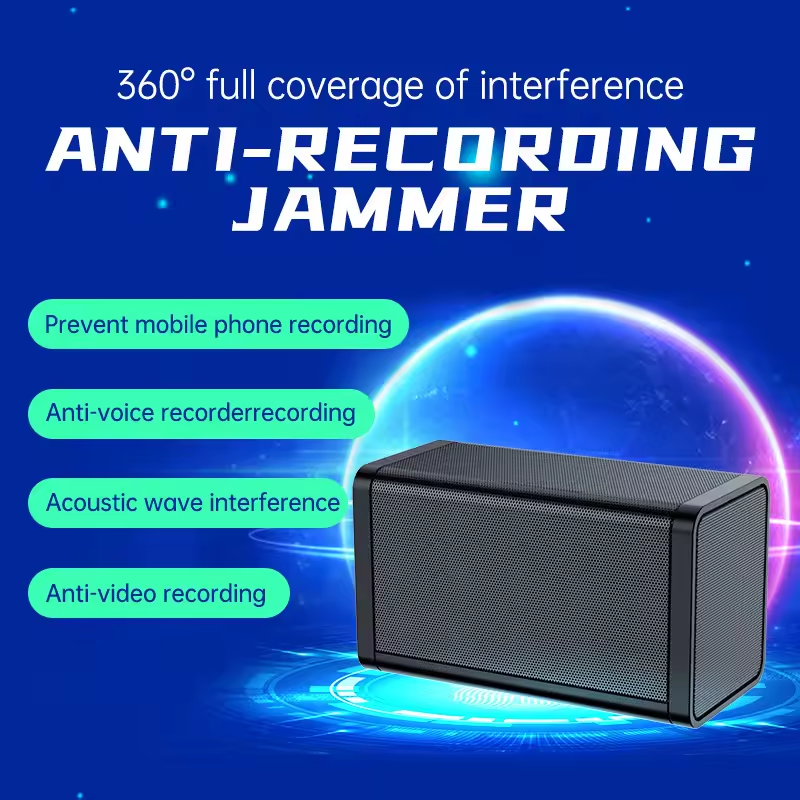How work for Recording Jammer?
 Oct 14,2024
Oct 14,2024

 XinShengHeng
XinShengHeng
The Principle Of A Recording Jammer

The principle of the recording jammer is to emit ultrasonic waves with random noise that cannot
be sensed by the human ear. When digital devices such as mobile phones record, these noises and the sound of normal conversation are recorded into the digital device, making the recorded audio invalid, and the audio information in the filmed video has the same interference effect.
The recording jammer mainly uses two techniques to achieve its function:
Ultrasonic interference mode: This is a sound frequency emitted by a frequency that is not perceived by the human ear, which does not have any harm and impact on the human body, but will cause huge interference to all devices that rely on the microphone to accept sound. The frequency band emitted by the ultrasonic wave impacts the sound film of the microphone head of the recording and video recording equipment, causing irregular frequency fluctuations on the sound film, so that the sound recorded by these devices is completely irregular noise. This mode ensures the security of voice messages, since randomly generated sequences cannot recover the original information from the recorded signal.
White noise (acoustic noise mode) : In the implementation of some anti-recording jammers, in addition to ultrasonic interference, white noise technology is also used. White noise is a noise signal containing all frequency components, which has a uniform power spectral density over the entire audible frequency range. This noise can cover the normal speech signal, so that the recording device records only noise information, and can not distinguish the voice signal. This technology further enhances the effect of the recording jammer, ensuring that normal conversation can be effectively protected even in the presence of other noise.
Recording jammers are designed and applied to protect privacy and security by interfering with the proper functioning of the recording device and preventing the unlawful collection of sensitive information. These devices are usually portable and suitable for use in situations that require high levels of confidentiality, such as conference rooms, courtrooms, offices, etc.




 Home
Home Work principle of GPS Wireless Signal Detector
Work principle of GPS Wireless Signal Detector  You May Also Like
You May Also Like

 Tel
Tel
 Email
Email
 Address
Address










